Donna Patterson-Fraser is a seabird ecologist and a bird whisperer, for certain. The opportunity to get out in the field with Donna and field biologists Jen Blum and Shawn Farry during my time at Palmer Station was incredible. Donna has been studying birds in Antarctica for the past twenty-two years and was very willing to share her excitement about and knowledge of giant petrels with me. She is a petite woman with a sizeable spark who navigates her way in and out of zodiacs and over slippery rocks with ease, grace and speed. The day I was in the field with Donna, she was collecting data on giant petrel nestlings (or “jeeps” as she affectionately calls them), a species she has studied on the islands around Palmer Station since 1991.
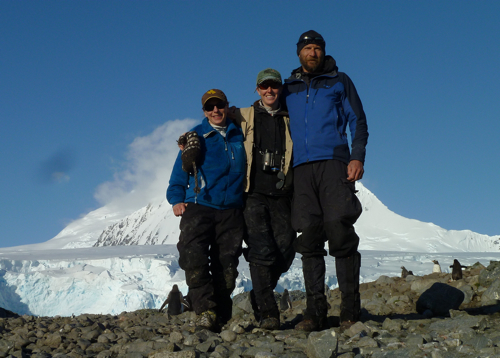
It’s been an unusual field season in that less than 50% of the chicks per nesting pair have survived this year. This is much lower than the 90% success rate Donna has observed in previous years. The major threat faced by the birds is commercial fishing; Donna, Jen and Shawn have at times found fishing line and hooks in the nests of the giant petrels and have seen a steady increase in this occurrence in recent years. This year Sean found a hook protruding from the inside of a female giant petrel’s throat and was able to remove it by carefully snipping the hook and pulling the remainder out through the bird’s mouth.
The failed nests this year are the result of brown skuas, who have learned to steal eggs from adults. You may remember from previous journals that giant petrels have an adaptation called “gaking,” during which they projectile vomit an oily substance onto potential predators. The oil damages the feathers of other birds, causing them to lose insulating properties if the birds get wet. Aware of this adaptation, brown skuas don’t take nestlings, but have learned to steal eggs by harassing parents away from nests and swooping in for the steal. Giant petrels only lay one egg per year and (unlike penguins and other birds) they will not relay if the nest fails. The reproductive cycle for giant petrels takes about 7 months of each year. This time involves courtship, a two-month incubation period and a 4-month chick-rearing period. A failed nest represents a considerable loss of time and resources for a giant petrel.
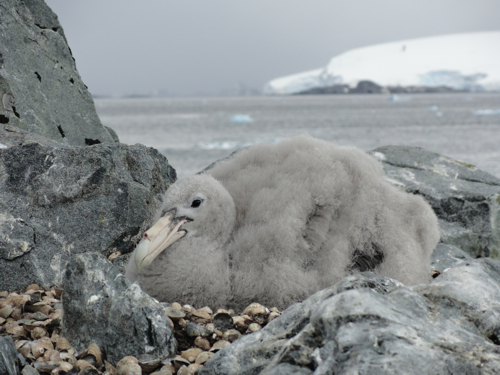
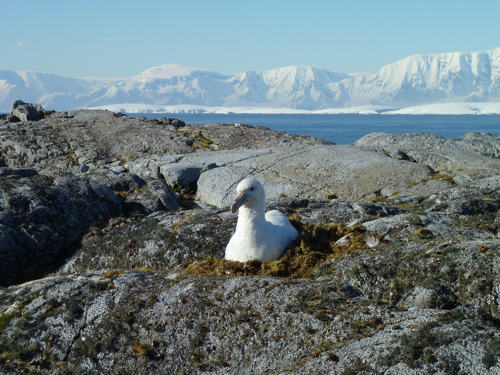
Since 1991, Donna has focused on a group of giant petrels on Humble Island a mile or so from Palmer Station. During that time, the birds have become habituated to Donna and her well-trained field assistants. Because of their projectile vomiting behavior, giant petrels are notoriously difficult to study in the field. During her first year studying the birds, Donna spent most of her time watching and learning about the birds’ behavior in order to understand how to minimize disturbances while studying them. She commented that in some ways the jeeps are like people; she’s observed a broad spectrum in personalities of individuals and respects the limits of each bird.
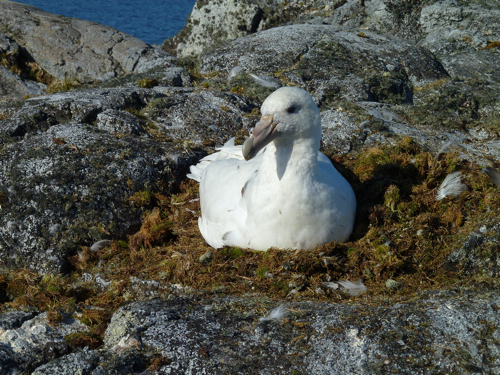
Donna is adept at handling the nestlings and does so with great care. The entire time she was weighing and measuring the birds on Humble Island, she was also explaining her research to me. She’d lovingly slip the nestling into a cloth bag to weigh it, remove it from the bag to measure its beak with calipers and return it carefully to its nest in the blink of an eye. Somehow as she did this, she explained to me what she was doing and relayed the numbers to Jen who transcribed them in a field notebook. This all happened seamlessly and before I knew it, we were hiking to the next nest to repeat the process. Donna has a true love for the jeeps and comments that they are in some ways a “blank slate” because hers is the only long-term study of them. Whereas penguins have been studied extensively in different parts of Antarctica, Donna’s research involves the only long-term study of giant petrels in Antarctica.
Donna’s love of animals came early. Her brother and sister remember a trip to the Catskill Game Farm when Donna was two years old and still in a stroller. As the story goes, she wrapped her arms around a deer’s neck and didn’t want to let go. In college she studied zoology and wildlife management and first came to Antarctica as a general field assistant at South Pole Station. Her job at South Pole primarily involved shoveling snow and the only wildlife she saw during her entire stay was a single South Polar Skua. As an animal lover, South Pole wasn’t an ideal location for Donna so she next applied to work at Palmer Station, where she volunteered on a number of projects. When I asked her what advice she’d give to high school students interested in doing research in Antarctica, Donna said the first thing you need to do is “Get your foot in the door. Volunteer and then figure out what really interests you. Your path may not be direct, but the most important thing is getting your foot in the door.”
Spending a morning in the field with Donna was one of the highlights of my time at Palmer Station. She is remarkable and I’m certain I’ll never forget that day.
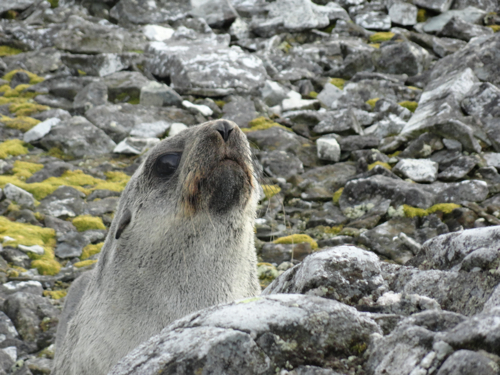


Comments